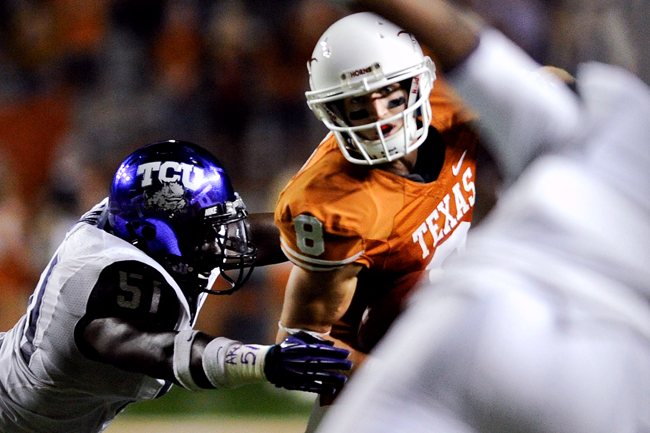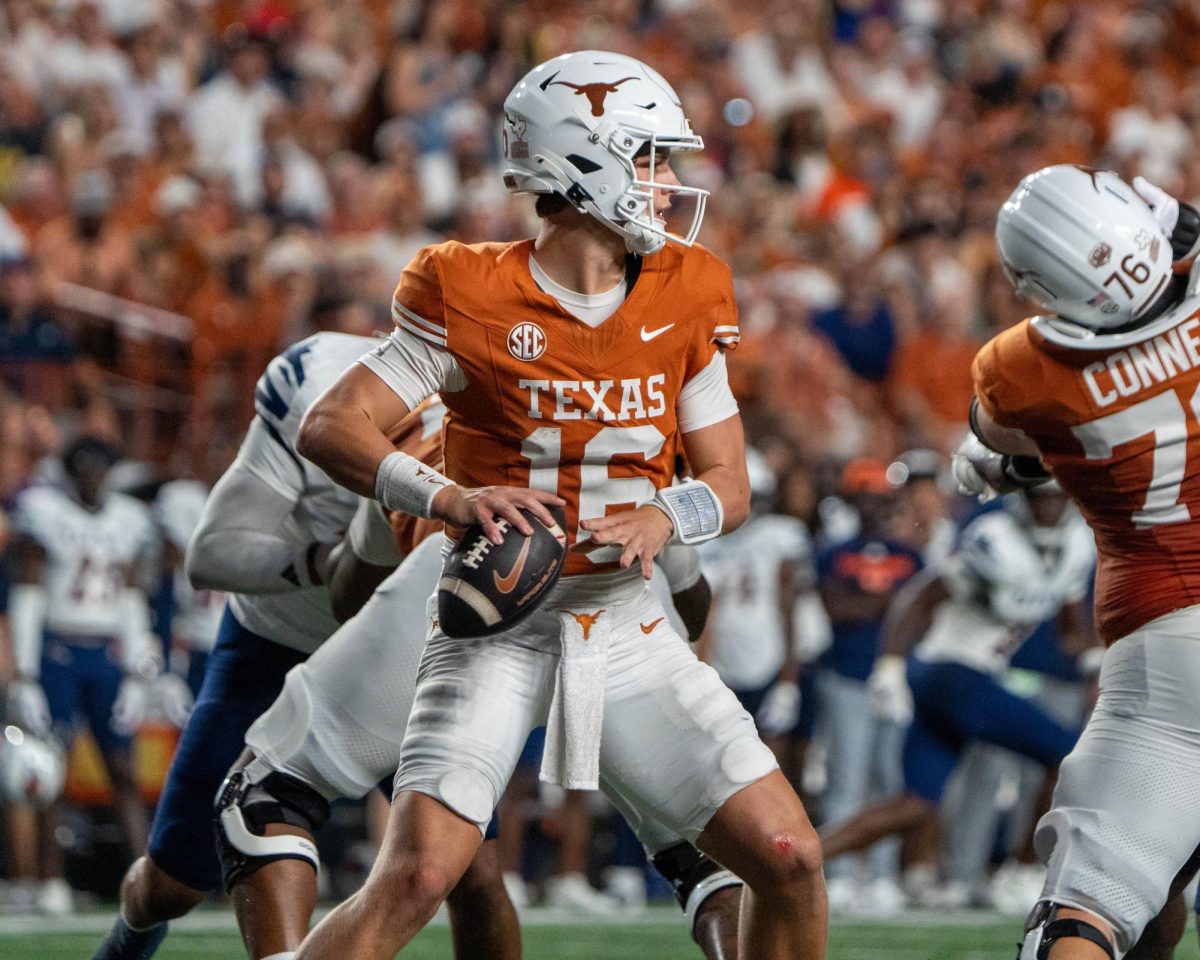It’s Thanksgiving day, 1895. Macy’s is still nearly 30 years from starting its now-famous Thanksgiving Day Parade in New York. Texas athletics is more than a decade away from officially becoming the Longhorns.
On Thanksgiving day in 1895, Texas Varsity played its first Thanksgiving contest on the gridiron in a 38-0 win over San Antonio. Texas would play on Thanksgiving the next three years with a combined margin of victory of 68-4.
Following the turn of the century, Texas took on Texas A&M on Thanksgiving in 1901 with Varsity winning 32-0. The next year, A&M emerged victorious, beating Texas 12-0. The two programs played each other on Thanksgiving five times from 1901 to 1909. In 1918, the Longhorns and Aggies began frequently playing each other on Thanksgiving, with Texas going 16-8-3 in 27 Thanksgiving contests over the next 32 years.
In 1952, following a few contests not on Thanksgiving, the two programs resumed play with Texas winning 14 out of the next 15 Turkey Day games — including the series’ longest win streak of 10 games, from 1957-1966. A&M countered with seven straight Thanksgiving Day victories starting in 1985 and 10 of 11 overall from 1984-1994, before the series was moved to the day after Thanksgiving because of both schools moving into the Big 12.
It wasn’t until 2008 that the Longhorns and Aggies moved back to Thanksgiving play, after which Texas took three of four before the Aggies left the Big 12 in favor of the SEC. In the Longhorns’ three victories over this span, quarterbacks Colt and Case McCoy took care of the football with the Longhorns only throwing one interception on a trick pass by a wide receiver. In these three contests, the Longhorns scored eight times through the ground to A&M’s lone rushing touchdown. In Thanksgiving victories under Mack Brown, the defense allows more points per game in victories (24) than in defeats (22.00). Stopping the run has been crucial for success on Thanksgiving for Texas, which allowed 227.5 rushing yards per loss as opposed to 90 yards in wins.
The biggest problem in the losses is poor offensive play from the Longhorns, who turn the ball over four times per game in losses (only once per win), leading to scoring only 15 points per game in losses compared to 42 points in victories.
The Texas defense seems to have things together when it doesn’t have to face an opponent that runs its quarterback often. This week, expect Texas Tech to test the defense by running with quarterback Baker Mayfield. Texas should be able to win the game against the reeling Red Raiders. But if they can’t stop Mayfield on the ground, the result will be similar to Thanksgiving last season.





















